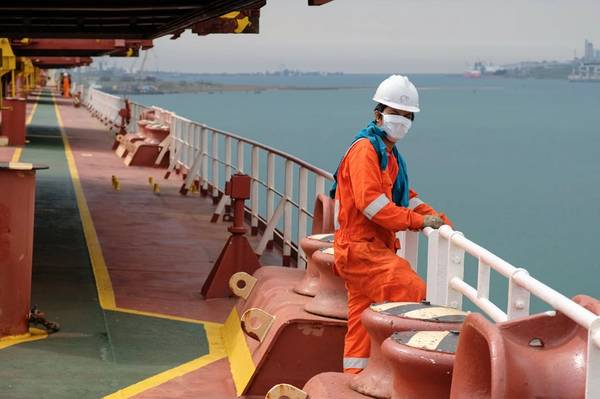
A new report from the ITF Seafarers’ Trust (ITFST) and the World Maritime University (WMU) highlights the continuing absence of shore leave for the world’s seafarers.
Analyzing the data from 5,879 seafarers who responded to the ITFST’s Shore Leave Survey, WMU researchers concluded that more than a quarter of seafarers did not get any shore leave at all, and a third only got ashore once or twice during their entire contract, based on an average of 6.6 months onboard.
Officers were least likely to get shore leave, and seafarers on offshore vessels and tankers were the least likely to get ashore. Across all respondents, even when seafarers did get shore leave, 47% were able to spend less than three hours ashore and overall, 93.5% spent less than six hours ashore.
The data shows that the barriers to shore leave are multiple and systemic: minimal crewing and high workloads, increasing inspections, port security and operational efficiencies leading to lack of time in port, lack of shore-based facilities and costs of transport.
The report also includes feedback from seafarers themselves, showing a strong depth of feeling evident from their responses to the open questions.
A Turkish deck officer, after 4.5 months on board a tanker, reported “As a deck officer, most of the time, our shore leave is based on our port watch schedule and chief officers’ approach to officers; while having 6 on 6 off watch it is almost impossible to go out without making another officer take your watch for a couple of hours, and after you are back in port you have to take night watch which makes it hard to stand. […].”
An Indian deck officer, after six months on board stated: “I have been working in the shipping industry since 2006. I have noticed that all the ports have slowly found ways to deny shore leave to the ship’s crew. If they can’t tell ‘NO!’ straightaway, then they will impose heavy charges so that everyone automatically refuses to go ashore. Plus, the workload and the commercial pressure on senior officers are so much that they find it difficult to go ashore. Generally, oil/chemical refineries where our tankers go for loading or discharging are far away from the cities. There is nothing close by where we can go and relax a bit, have some nice food or go shopping. There are ports which force us to use boats for shore leave, and those boats are very expensive and unaffordable! After a long sailing, we feel exhausted, and it’s our right, I think, to get a shore leave.”
The report states: “At a time when mental health and well-being are recognized as important considerations for seafarers’ health and safety on board, access to shore leave should be promoted to ensure the safe management of the vessel.
“Further, given the looming crew shortages, affording decent opportunities for relaxation from work should be a priority for attracting and retaining crew.”



